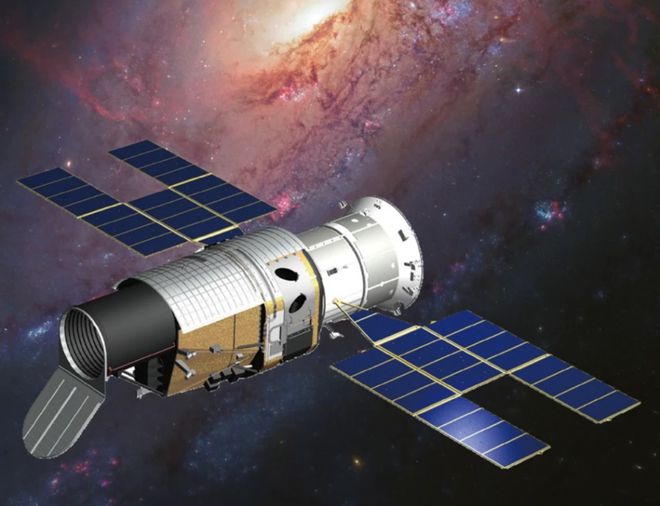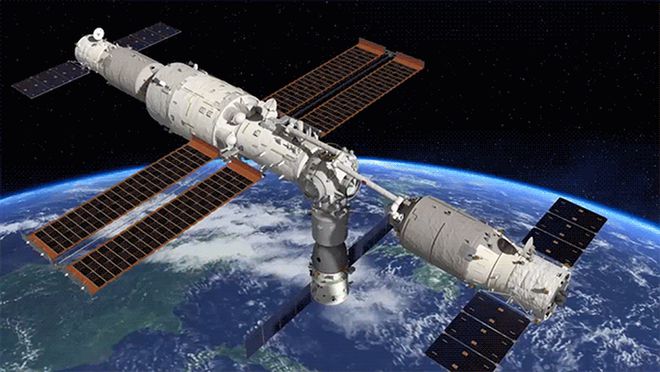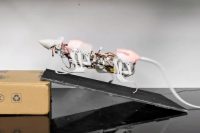Why are telescopes launched into space?
Many people will be curious, why do humans send telescopes to the sky? Telescopes on the ground are easy to assemble and control and can be made larger. Why would scientists prefer to limit the diameter of telescopes and launch them into space?
The simple answer is that ground-based observations are subject to a huge limitation – the atmosphere. The turbulence of the atmosphere will interfere with astronomical observations. Water vapor will also absorb electromagnetic waves in many bands. Weather such as rain, snow, and cloudy will directly make the telescope unable to work.
In order to reduce atmospheric interference, American astronomer Lyman Spitzer proposed as early as 1946 the advantages of sending telescopes into space. Unfortunately, human spaceflight technology was not enough at that time. Even the United States could only use a plane to take the telescope to an altitude of more than 10,000 meters for temporary observation and shooting and obtain more accurate images than the ground.
Today, humans have launched many telescopes into space, and they have confirmed Spitzer’s theory and obtained countless information about the universe that cannot be understood on the ground. In honor of Spitzer’s great vision, NASA also put Spitzer’s name on a space telescope launched in 2003.
China Sky Survey Optical Module
The full name of the optical module is the Chinese Survey Space Telescope (CSST), which is the first large-scale space survey telescope in China.
According to reports, the diameter of the survey telescope is 2 meters, which is about the size of a bus, which is smaller than the 2.4-meter diameter of the famous Hubble Space Telescope in the United States. However, this does not mean that it is not as good as Hubble, and the image quality of the two is similar.

In fact, the Sky Surveyer not only has sufficient accuracy, but its greater advantage is its wide field of view. According to reports, the field of view of the Sky Survey is 300 times that of Hubble! That is to say, it takes Hubble a year to observe the same area of area, and it only takes a little more than a day for the Sky Survey to complete it! Experts made an analogy, just like on the African savannah, a telescope-like Hubble can photograph the pores of elephants in the distance, while the Sky Survey can photograph the overall state of a large number of animal communities. The two have different functions.
Not to mention compared with Hubble, even the next-generation telescope that has not yet been launched in the United States, the Roman Space Telescope (previously called the Large Field Infrared Survey Telescope), has a field of view only 2/3 of that of the survey telescope!
Moreover, the cost of the sky survey telescope is only about 260 million yuan. The James Webb Space Telescope just launched by the United States cost more than 60 billion yuan, a difference of hundreds of times! It can be said that the least amount of money was spent, and the greatest thing was done.
How strong is the Sky Survey?
According to Chinese experts, the observation wavelength range of the Sky Survey Optical Module is 255-1000 nanometers, covering the wavelengths from near-ultraviolet, visible light to near-infrared, and the observation wavelength is similar to that of Hubble. Its resolution can reach 0.15 arcseconds, which is far better than the Roman telescope. In ultra-quiet, ultra-precise and ultra-stable platform design indicators, it is even better than Webb! Although I dare not say that it will surpass the next-generation space telescope of the United States at once.
The Sky Survey is equipped with five payloads, including a Sky Survey Camera, an Integral Field of View Spectrometer, a Multi-Channel Imager, an Exoplanet Imaging Coronagraph, and a Terahertz Receiver. Its design life is 10 years. In the next 10 years, it will be my country’s flagship space observation equipment.
With its powerful observation capabilities, the Sky Survey will conduct observations in the fields of the formation and evolution of cosmic structures, dark matter and dark energy, as well as exoplanets and solar system objects, which are the most important cosmic mysteries in the world today. In the future, I believe it will bring more major astronomical discoveries to our country!
Until last year, China planned to launch the Sky Survey in 2024. However, according to the director of the China Manned Space Engineering Office, the optical module of the Sky Survey will be launched in 2023, which is really exciting!
As you can tell from the name, the optical module of the Sky Survey is related to the Tiangong Station in China, and it will run in co-orbit with the space station. According to the original plan, it was connected to the Mengtian experimental cabin, but it was later changed to an independent cabin due to compatibility issues. The two are usually not connected together, which can ensure that it has a more flexible body, conduct large-scale cosmic observations, and prevent the brightness of the space station from interfering with observations.
The Sky Survey has its own power system, which can adjust its orbit, which prevents its orbit from gradually shrinking and falls into the atmosphere, and can also dock itself to the space station. In special cases, it will be connected to the space station and maintained by the astronauts in the space station, which is much cheaper and safer than the United States using the space shuttle to maintain space telescopes.




GIPHY App Key not set. Please check settings